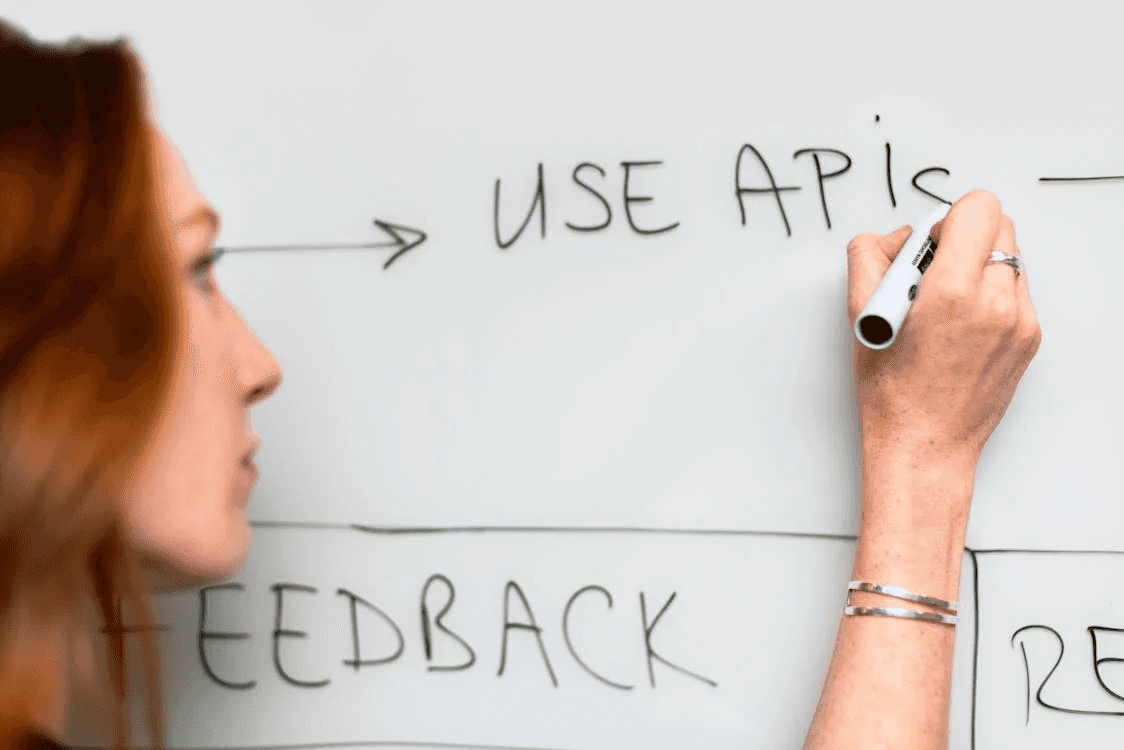
June 25, 2025
One of the most important aspects of developing current applications is integrating external data APIs (Application Programming Interface). APIs are the links between your app and outside services, allowing you to access everything from social network feeds and user behavior to geographical information and financial insights.
Leveraging these integrations enables you to deliver richer functionality, faster performance, and better user experiences without reinventing the wheel.
However, seamless API integration requires more than just tying the dots together. Inadequate implementation can result in frustrating downtime, bad app performance, or security threats. Developers must thus approach integration with a solid basis and a well-defined plan.
1. Know the API inside and out
Make sure you understand the API you’re working with before you start writing code. Learn about its needed headers, rate restrictions, authentication procedures, data formats, and endpoints by carefully reading its documentation. Keep an eye out for versioning support and how it manages problems.
Among the main factors to consider is the question of the API being well-designed and developer-friendly. A high-quality, well-designed API tends to be predictable, consistent, and well-documented, which makes the integration process less painful and surprises less likely to happen.
Understanding these characteristics early on helps developers choose APIs that support long-term stability and ease of use.
2. Implement security from the start
Security of the API should not be an afterthought. External APIs make your application accessible to new data flows and services, and it is paramount to ensure that interactions are secure from the outset.
Authenticate using industry-standard techniques, including signed tokens, OAuth 2.0, and API keys. Credentials should never be kept in public repositories or stored in your frontend code. Make sure that all data is served over HTTPS to avoid snooping or data alteration.
Just as important is input validation. Don’t assume the data from an external API is safe. Always sanitize and verify it before passing it to your system. This mindset of cautious trust helps protect your app and your users from potential threats.
3. Build for resilience
No API is immune to failure. Whether it’s a timeout, a rate limit hit, or a temporary outage, your application must be prepared to adapt without breaking.
Start with solid timeout and retry strategies. When an API doesn’t respond quickly, your system should know when to try again or move on. Techniques like exponential backoff (gradually increasing wait time between retries) can reduce the strain on both systems.
Additionally, consider fallback solutions. For example, if the live data is unavailable, you might display cached information or a user-friendly message. Finally, log errors in a clear and searchable format so you can track recurring issues and fix them proactively.
4. Stay within rate limits and service constraints
Most APIs come with usage limits to protect their performance and prevent misuse. Ignoring these limits can lead to throttling, delayed responses, or even a complete block of your access.
To prevent such problems, familiarize yourself with your request quotas well in advance and build your app around them. Batching requests or, if practical, utilizing server-side aggregation can help you avoid making too many calls. It is essential to use queuing and throttling techniques if your app polls for data on a regular basis, such as when tracking real-time market data.
This is especially relevant for high-frequency data tools like equity trackers for hedge funds and asset managers, which help them monitor company-level trends. When consuming APIs that power these kinds of services, managing rate limits becomes a matter of performance and reliability.
5. Design for modularity and maintainability
As your application grows, so will the number of APIs you depend on. A modular design will help keep your codebase organized and maintainable.
Place the API logic in a separate service layer or module to keep it apart from the main body of your application code. This makes testing, updating, or replacing APIs easier later on. To store keys and endpoints, use environment variables rather than hardcoded values, which are insecure and hard to manage.
Furthermore, document how each API is integrated by including any quirks or special formatting required. This level of internal transparency helps future developers understand the system and onboard quickly.
6. Monitor, log, and evolve your integration
The work doesn’t stop when your integration goes live. APIs change over time as endpoints are deprecated, limits are updated, and features are added. Constant observation makes sure you’re prepared for any issues that may arise.
Track uptime, error rates, and response times with monitoring tools. Create notifications for persistent problems or unexpected increases in rejected requests. By examining these patterns, you can find areas where your integration is lacking and improve performance.
Subscribe to the API provider’s update channels to stay in the loop. Staying engaged ensures that your application remains compatible and competitive.
Conclusion
External APIs are powerful enablers of modern app development. They can power up your application, linking it to services and data streams that you would be hard-pressed or unable to create by yourself. With great power, however, comes great responsibility.
With the best practices listed above, you will be able to combine external data with intent and accuracy. You can enrich your app with location data, scale with cloud services, or both, and the considerate use of APIs will make you move faster, remain agile, and provide better experiences.
Recent Posts

August 27, 2025
How to Find the Right Learning Path When You’re Switching to a Tech Career
See post

August 22, 2025
Developer News This Week: AI Speed Trap, GitHub Copilot Agents, iOS 26 Beta Updates & More (Aug 22, 2025)
See post

August 08, 2025
Developer News This Week: GitHub GPT-5, VS Code 1.103 & Chrome 139 (Aug 8, 2025)
See post